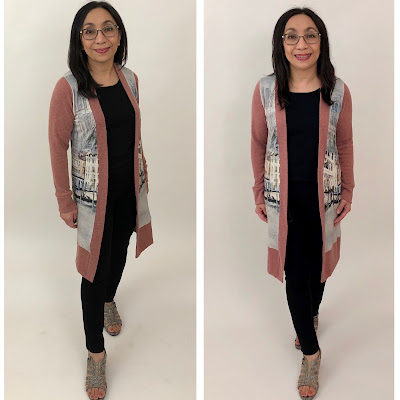I recently posted a review of a cropped cardigan I made using a Marcy Tilton pattern Vogue 9190 which you can read at PatternReview.com. I received a few inquiries about the aglet I used to secure the ends of the drawstring that I used shown below:
So I thought I would post a simple quick photo tutorial on it.
But first what is an aglet? I first learned about the term when I was searching for something to secure the ends of my shoelaces. Back then I didn't know what it was called. Aglet may be made of plastic or metal. It is a hollow sheath that is used to encase the ends of a drawstring or shoelace to prevent it from unraveling.
1. Where to buy?
Nowadays it is easy to find a source for notions such as this just by the simple act of browsing online. The one I used for my recent project was purchased from Amazon and it was available in bulk. It was not expensive but as the saying goes, you get what you pay for. I have a couple of aglets purchased a long time ago from
Botani Trimmings and it was sold by the piece. A little more pricey but the quality was way better than the bulk ones from Amazon. See comparison photos below.
The one on the left was from Botani Trimmings and the right from Amazon.
The former was longer and more substantial in thickness. The latter was really thin and easy to bend and deform.
View of the open side.
2. To use the aglet, just insert the end of the drawstring or lace through the opening. If your aglet is a bit narrow, you can always gently pry it open with a hemostat.
3. When you have inserted the drawstring to the closed end of the aglet, gently clamp the open edges together.
4. Some like to secure the drawstring further by sewing a thread through the holes in the aglet.
There you go, a quick and easy way to secure the raw edges of a drawstring or ribbon. One can always just tie a knot but with the different colors of aglets available, it's a nice finishing touch!













